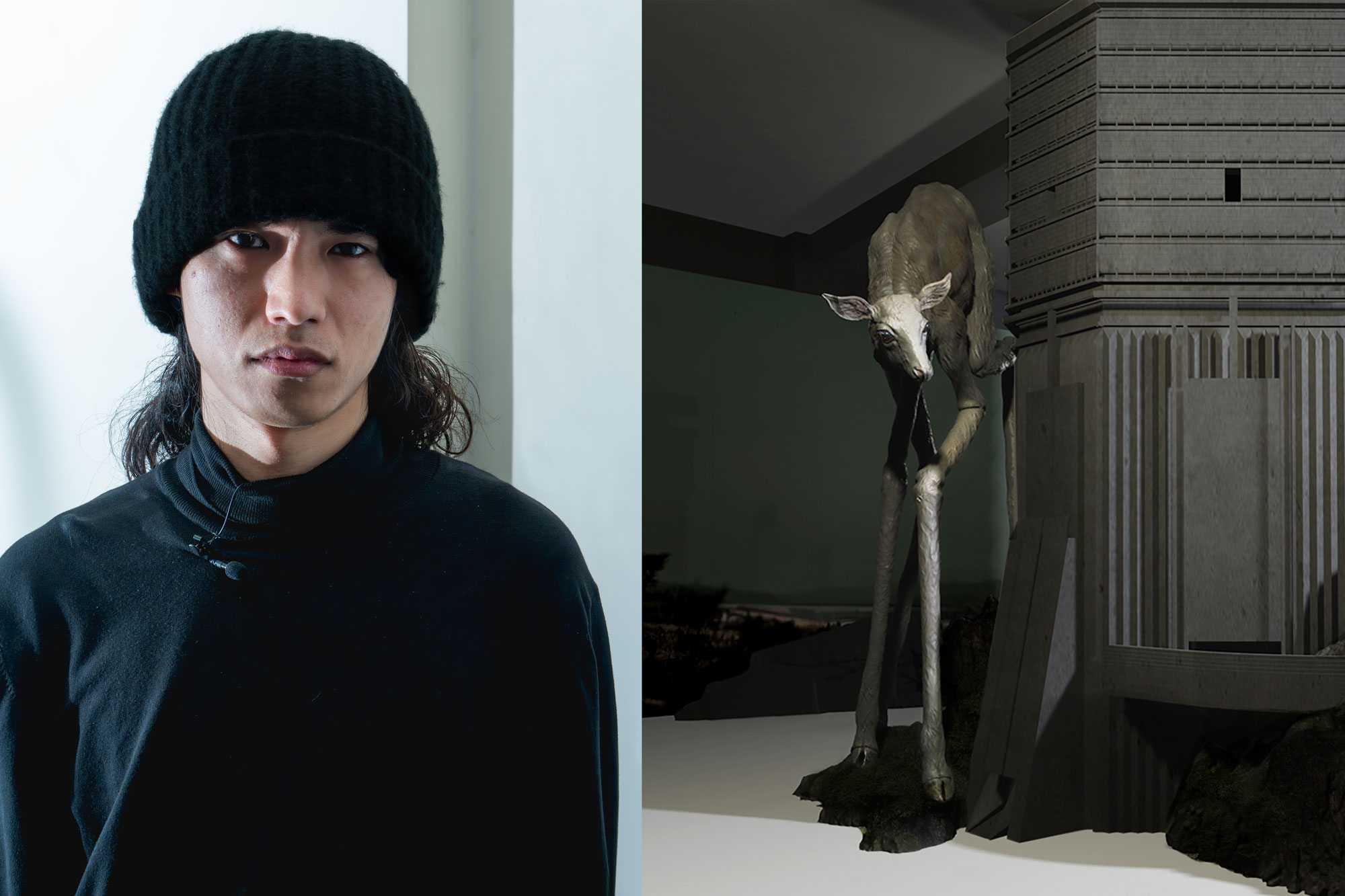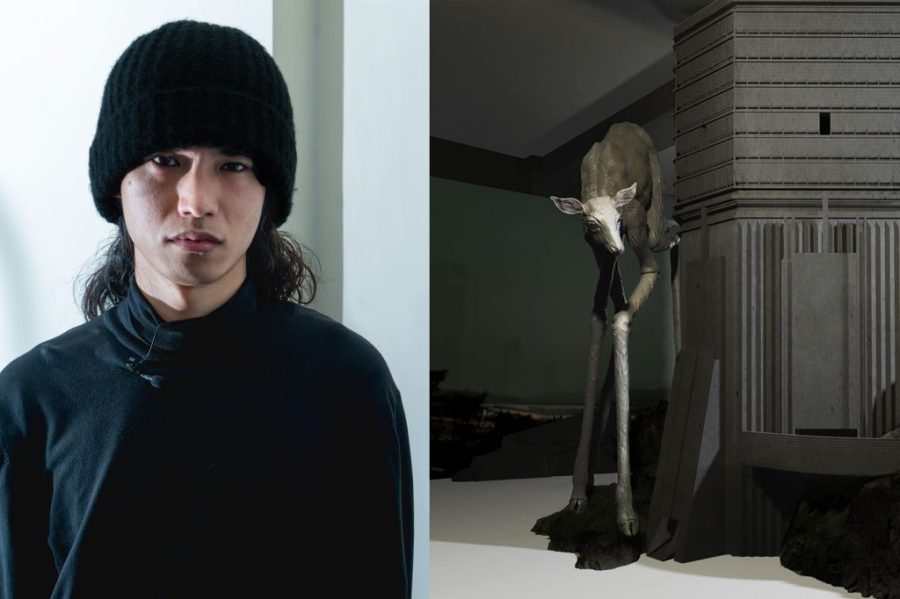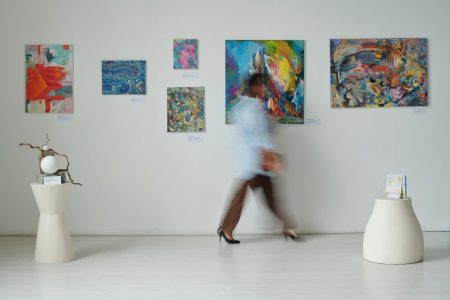When curator Chang Chan saw Wong Weng Cheong’s solo exhibition Somewhere Still Wild at Macao’s Casa Garden in 2021, she knew she had to work with the Macao-born artist.
Dim grasslands dotted with elongated sheep filled the walls, almost like scenes from a Tim Burton film. The work, Chang explains, had “an intense style of its own.”
While it may have been dark, if not post-apocalyptic, it struck a chord.
Soon, the curator and artist would collaborate for another exhibition, The Secret of the Golden Flower, an examination of humanity in the age of artificial intelligence. After that mesmerising mixed media show, Wong’s popularity took off like a rocket ship.
First, The Secret of the Golden Flower was selected for Macao’s International Art Biennale. Now, Wong and Chang are off to the Venice Art Biennale, running from 20 April to 24 November this year, with a new installation titled Above Zeibode.
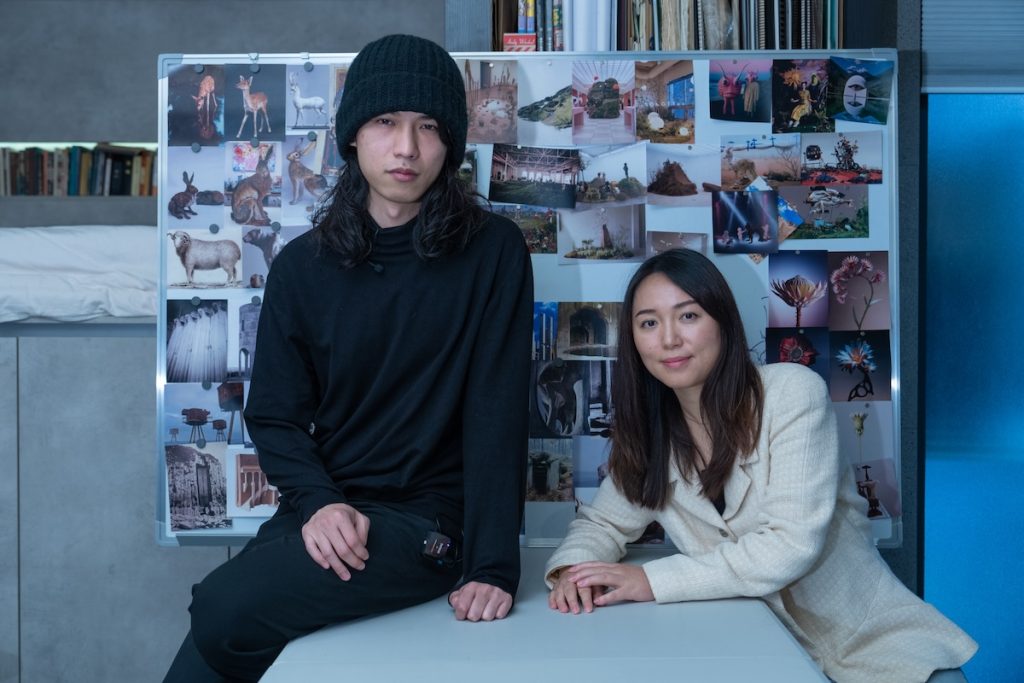
The name references a fictional city in Italian writer Italo Calvino’s Invisible Cities. While the 1972 novel may be an inspiration, there is nothing invisible about Wong or his work. On the contrary, the 30-year-old artist’s star is on the rise.
Here’s what to expect from his work in Venice.
Finding direction in the UK
In high school, Wong often found himself sketching portraits “without really thinking about creating a distinct style.” He may have lacked vision at the time, but he had talent.
In 2012, at just 18, his work featured in the inaugural Macao Printmaking Triennial. After that, he got a scholarship from the Macao Cultural Affairs Bureau to study at the prestigious London art college Goldsmiths.
The UK would give Wong the direction he seeked.
The misty isles’ abundance of sheep in windswept pastures and notoriously cloudy skies have become recurring motifs for the artist.
[See more: The Macao Arts Festival has announced a flash sale]
“In my work, the more a sheep eats, the longer its legs grow until, finally, it won’t be able to reach down to the grass,” he says.
Longing to devour even more grass, but prevented from doing so by their own appetites, they have become a metaphor for unchecked consumerism and worldly indifference.
These themes have defined Wong’s artwork, and they’ll provide a throughline for his installation in Venice. But the message will be slightly different.
Invasive species

For Above Zobeide, Wong has had to look inward.
In Calvino’s seminal work, which revolves around an imagined conversation between Marco Polo and the Mongol emperor Kublai Khan, Zobeide is described by Polo as a chaotic, maze-like city. It is full of men yearning for connection, who nevertheless amplify their sense of isolation by insisting on constructing their own private spaces.
The book is a reflection on humanity’s search for meaningful relationships in a world where individualism reigns. Wong follows that thread further in his installation, which is spread across several rooms and hints that something has gone terribly wrong in the landscape.
[See more: An exhibition of French Impressionism has opened at the University of Macau]
The first room transports attendees to a bleak pastoral scene populated by 3D models of Wong’s spindly-legged animals, this time including deer, hares and cows. While there’s a wooden tower and lamp post, suggesting human life, the installation is devoid of it – apart from biennale attendees, or “invaders” as the artist conceives of them.
In the next room, that sense of intrusion heightens. Cameras have recorded audiences in the first room, and that footage gets displayed on monitor screens in room two for all to observe their “invasion” of the artwork.
This clever twist is all the more remarkable when you consider that Wong and Chang managed to pull together their biennale submission in just two weeks.
‘Foreigners everywhere’
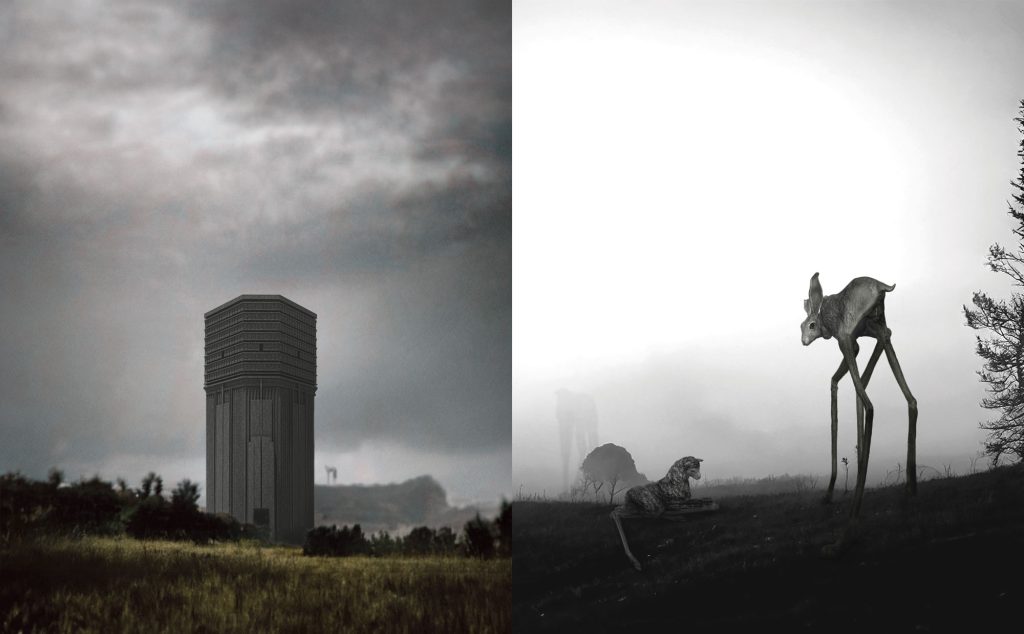
This year’s Venice Biennale revolves around the theme “Foreigners Everywhere,” and each artist’s work must involve an interpretation of it.
According to curator Adriano Pedrosa, it could have two possible meanings. In today’s globalised world, we encounter people from other countries wherever we go, but also, no matter where we are, we can’t shake the feeling that we’re somehow different. Wong opted for the latter.
“We found it interesting to explore the question of why we feel like foreigners,” Chang explains. “It has something to do with our personal experiences.”
Wong, of course, lived in the UK for several years, but Chang says his feeling of being on the outside stems from his introverted personality. “He always wants to be alone, but his dream life of living without others is impossible in reality,” she explains.
[See more: A show directed by Zhang Yimou takes up residency at MGM Cotai this year]
That is why so much of his artwork involves landscapes lacking people, and why Calvino’s story resonated with him.
But his installation also aligns with Pedrosa’s first definition of the theme: wherever you go, even this seemingly abandoned landscape, you can’t escape other people.
It’s a notion Wong may have to contend with more often. One of Macao’s most exciting young artists is already making bold statements with his exhibitions. Escaping the notoriety that comes with success in the art world might be impossible at this point.
